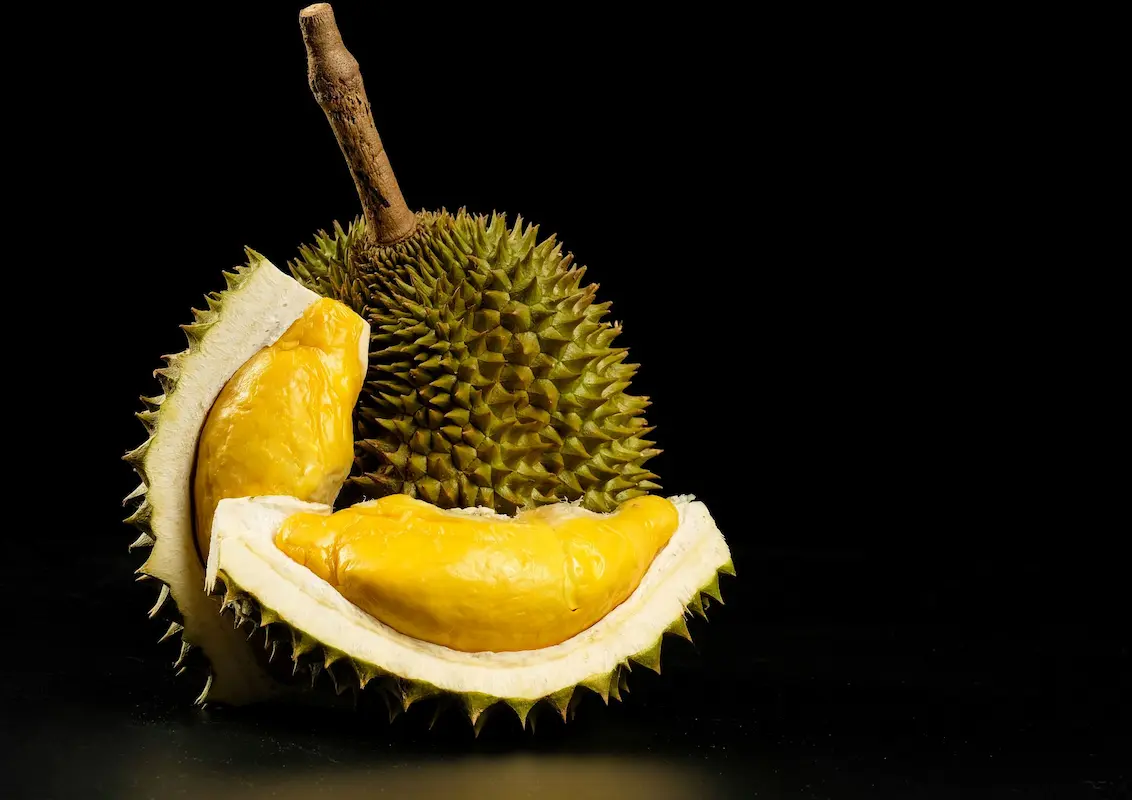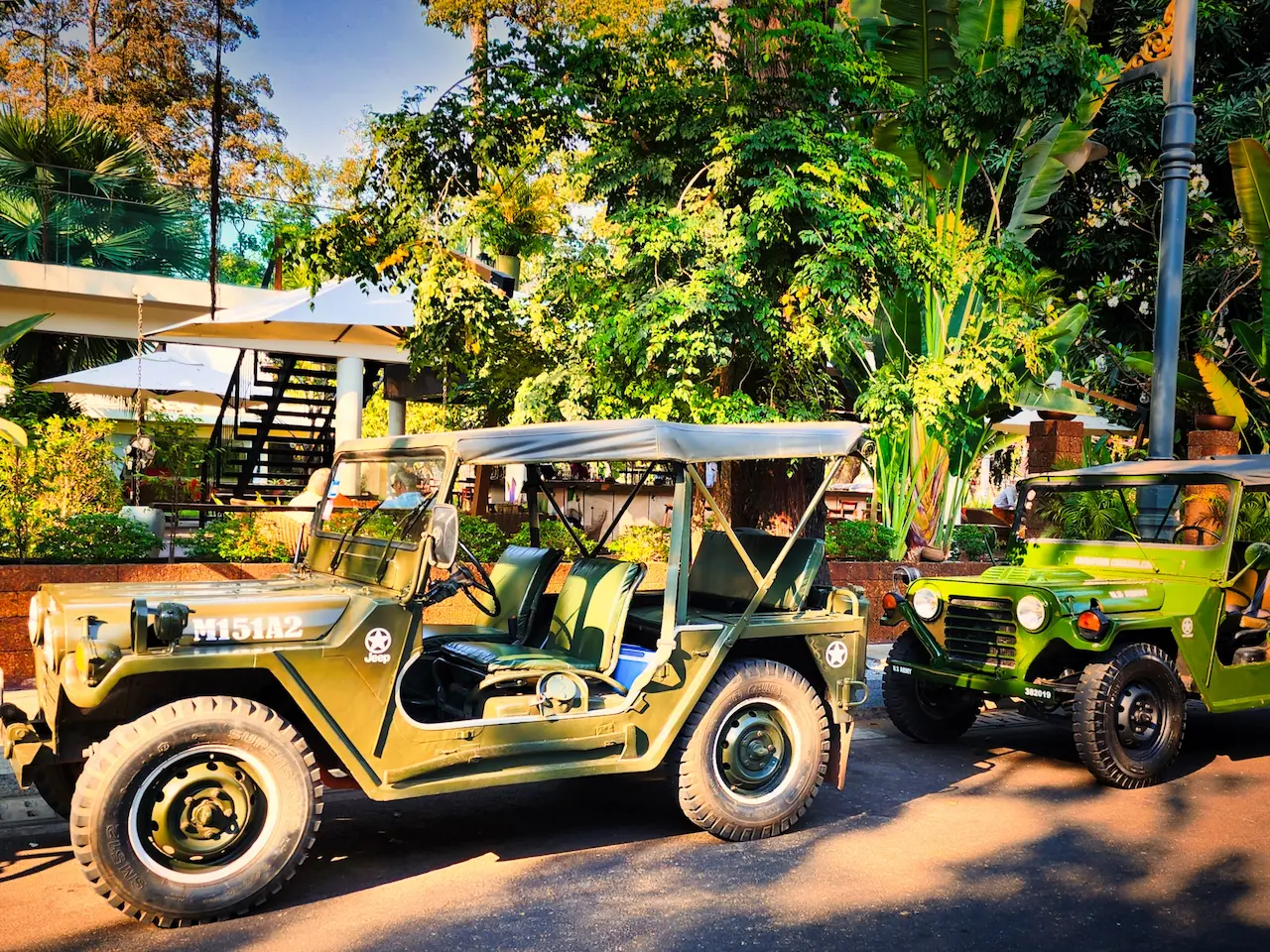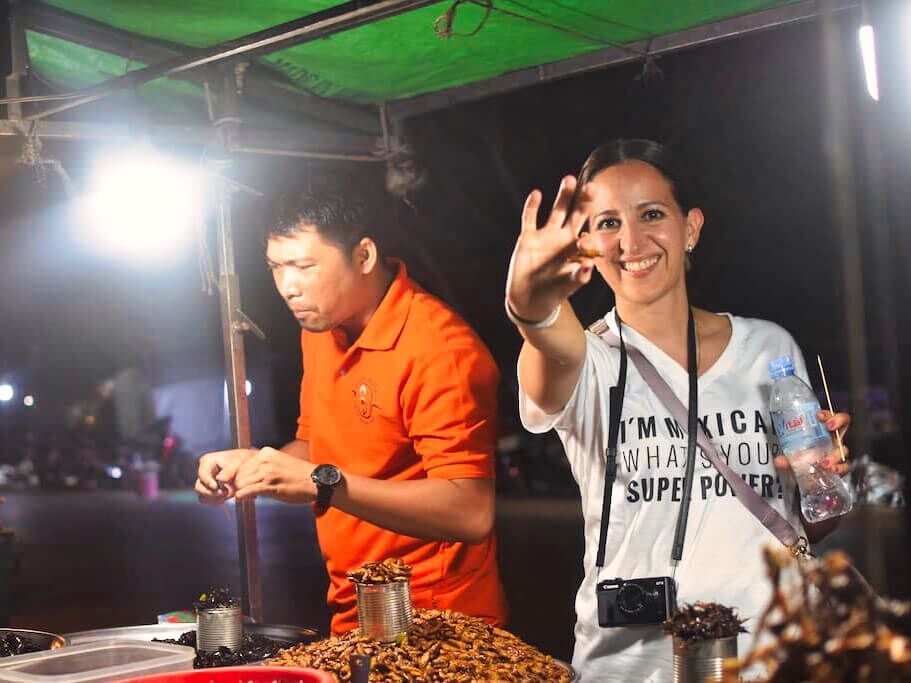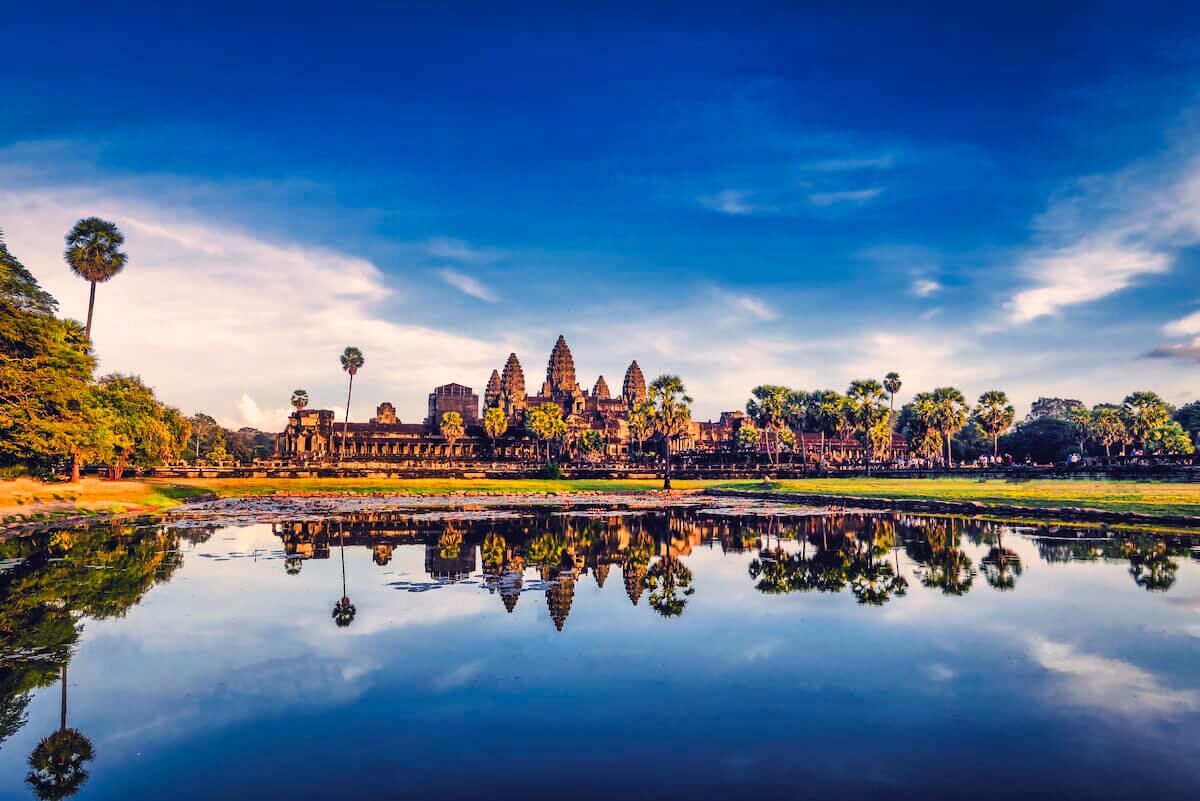Durian, often referred to as the “King of fruits” holds a special place in Cambodia’s. Its unique characteristics and polarizing smell make it a fruit worth experiencing for a willing traveler looking for new experience.
Table of Contents
Introduction to Durian
What is Durian?
Durian is a tropical fruit known for its large size, thorn-covered husk, and distinctive smell. Despite its pungent aroma, durian is highly regarded in Cambodia and other Southeast Asian countries for its unique flavor and creamy texture.
Historical Background
Durian has been a part of Southeast Asian culture for centuries. It is believed to have originated in the region, with historical references found in ancient texts. Over time, it has become a staple in Cambodia and a symbol of local heritage.
Characteristics of Durian
Appearance
Durian is easily recognizable by its large (can be 30 cm), spiky exterior, which ranges in color from green to brown. Inside, the fruit contains several segments filled with soft, custard-like flesh that can vary from pale yellow to red, depending on the variety.
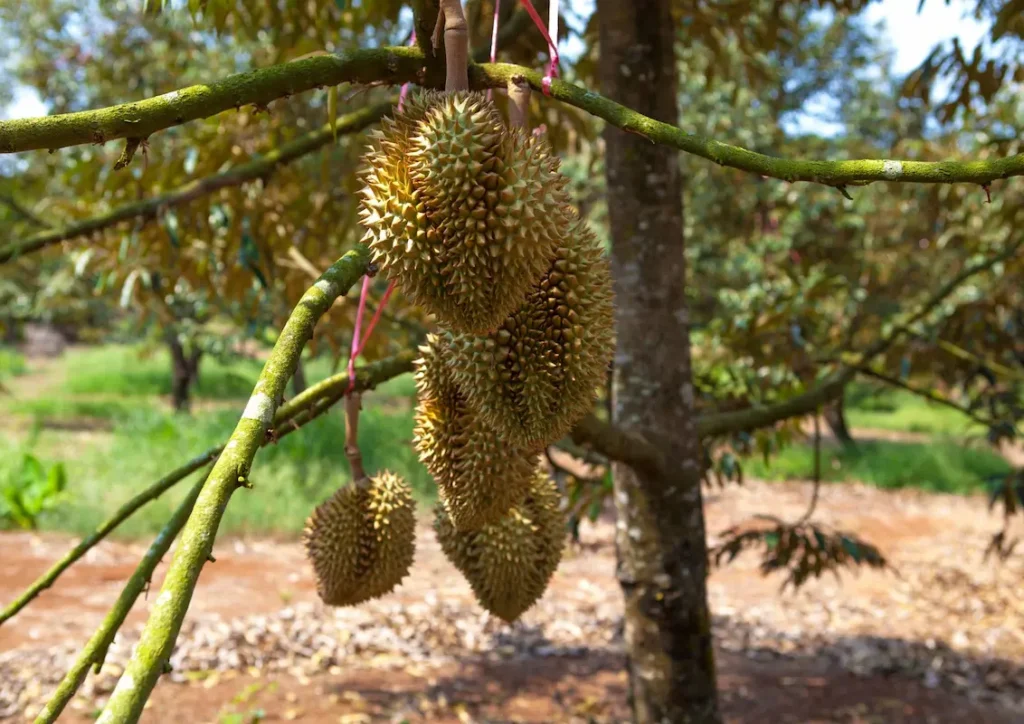
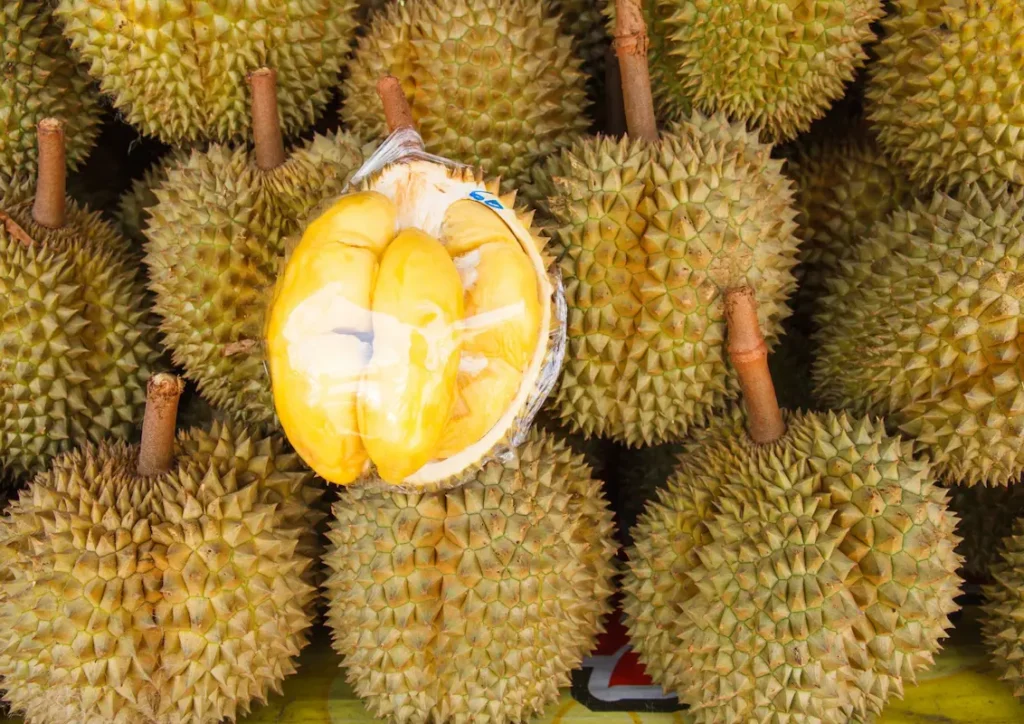
Varieties of Durian
Cambodia offers some native varieties of durian, each with distinct flavors and textures:
- Man Tong: Known for its robust taste and creamy texture.
- Jouhot: Appreciated for its unique blend of sweetness and bitterness.
Flavor Profile
The taste of durian is complex and can be described as a mix of sweet, savory, and creamy, with notes of almond, caramel, and vanilla. Its strong odor, often compared to rotten onions or turpentine, can be off-putting to some but is beloved by many.
High Price and Growing Difficulties
The high price of durian is due to the difficulties in cultivating the fruit. Durian trees require specific climatic conditions and are susceptible to pests and diseases.
Farmers frequently use strong nylon or woven rope netting strung between durian trees in orchards. These nets serve multiple purposes: they help collect the mature fruits, deter ground-level scavengers, and prevent the durians from falling onto people.
The labor-intensive process of growing and harvesting durian, combined with its limited growing regions in Cambodia, particularly in Kampot, Kampong Cham, and around Battambang, contributes to its high market value.
How is durian used in Cambodian cuisine?
In Cambodian cuisine, durian is mostly used in both sweet, like durian sticky rice or smoothies.
Durian Myths and Facts
Common Misconceptions
There are several myths about durian, such as it being dangerous when consumed with alcohol. While durian is high in sulfur, which can inhibit the metabolism of alcohol, moderate consumption is generally safe.
Interesting Facts
- Durian is sometimes called the “king of fruits” due to its high status and price in Southeast Asian markets.
- The fruit’s name is derived from the Malay word “duri” meaning thorn.
FAQs
What makes durian the “king of fruits”?
Durian is called the “king of fruits” due to its large size, rich flavor, and high nutritional value. It is also highly prized in Southeast Asian cultures, which adds to its regal status.
Why does durian smell so strong?
The strong smell of durian comes from its complex mixture of sulfur compounds, which can be overwhelming to some people but add to the fruit’s unique flavor profile.
Can durian be eaten fresh?
Yes, durian is often eaten fresh. The flesh can be scooped out directly from the husk and enjoyed as is. It is also used in various dishes and desserts.
Durian Bans in Public Places
Durian’s strong odor has led to its ban in many public places. It’s prohibited on public transportation in several countries to avoid disturbing passengers, and is also banned in some hotels and airports to maintain a pleasant environment. Despite its delicious taste, durian’s smell can be overpowering.
Are there any health risks associated with eating durian?
While durian is nutritious, it is high in calories and should be consumed in moderation. Some people may experience digestive issues or allergic reactions, so it’s best to try a small amount first.
Conclusion
Durian, Cambodia’s beloved “King of fruits” offers a unique and memorable experience for travelers. Its distinctive smell, rich flavor, and cultural significance make it a must-try for anyone visiting the region. Embrace the adventure, and discover why durian holds such a special place in the hearts of Cambodians. I hope you enjoy this guide for everything travelers need to know about durian!
If you are a fan of food and looking for some safe but unveiling adventures, you should definitely look at our Siem Reap Food Tours pages.
